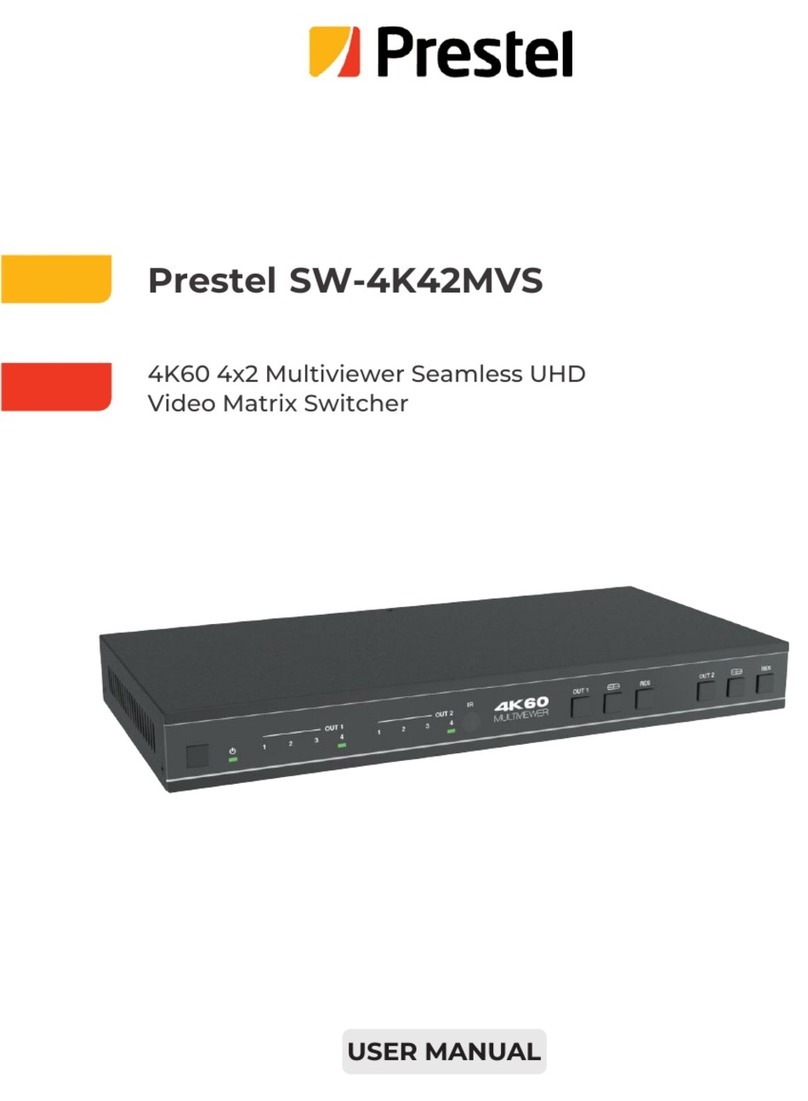
● IR OUT: Connects with IR emitter cable used for con-
trolling the local source device or the switcher.
● CONTACT IN: This input control reserving for direct
source input selection. Connect ground pin (mark as
on panel) with following pin number for individual source
selection.
Pin number Source
Pin 1
Pin 2
Pin 3
Pin 4
Pin 5
HDMI1
HDMI2
HDMI3
Display Port
VGA/YPbPr/CVBS
2 Audio Ports
● OUT: The audio comes from the input audio correspo-
nding to the selected video source and mixed with MIC
audio. Connects with amplifier for audio source broad-
casting.
● EXT1/EXT2/EXT3/EXT4/EXT5: Select the external
analog audio on OSD/WebGUI and insert the audio to
HDMI1/2/3/DP/VGA video source then output to display
and analog audio output port. The VGA Source select
the EXT5 as default audio input.
● MIC IN: Plug microphone in for audio source output.
● 48V/MIC/Line : 48V phantom power mode (connects
with phantom condenser microphone), MIC mode
(connects with dynamic microphone and electrets
condenser microphone) and LINE mode (connects with
wireless microphone or line audio input).
3 Output Ports
● HDBT Out: Connects with compatible Receiver for
video and / or audio output. Support 24V POC function.
● HDMI Out: Connect to an HDMI display or AV Recei-
ver for video and/or audio output.
4 Input Ports
These video input ports include 3 HDMI inputs, 1 Display
Port input &1 VGA input. VGA port support VGA, YPbPr
and CVBS format. Factory default is VGA format.
5 USB Port
USB port connects with USB flash disk or other storage
that contains the software update file to update the sys-
tem firmware.
6 Power Plug the 24V DC power supply into the unit and connect
the adaptor to an AC outlet.
6/31




























